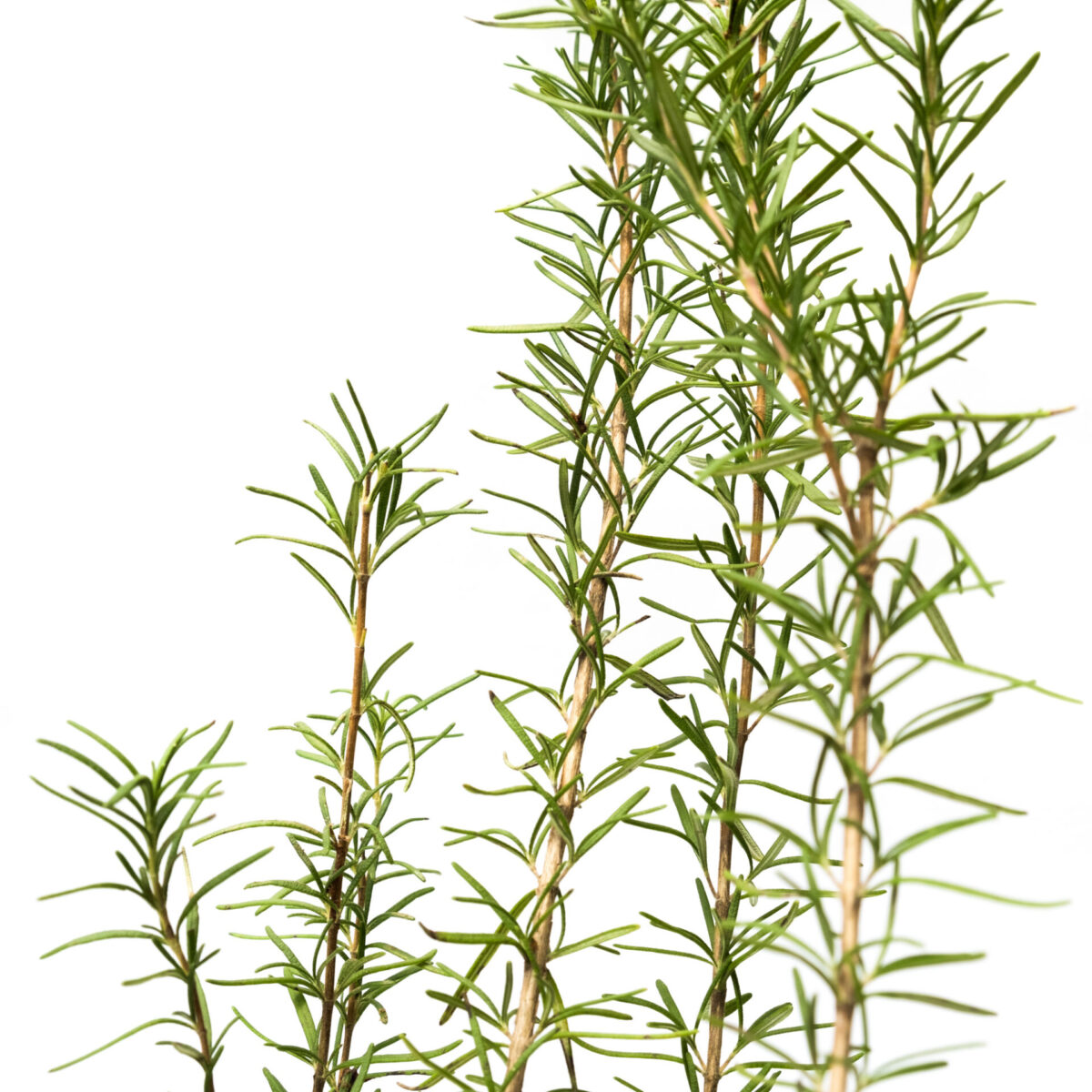Rosemary is a popular herb that has many uses in cooking, medicine, and aromatherapy. It is native to the Mediterranean region, but it can also be grown in other parts of the world, including India. In this article, we will show you how to grow rosemary in India, what are the benefits of rosemary, and some frequently asked questions about this herb.
Introduction
Rosemary is a perennial plant that belongs to the mint family. It has needle-like leaves that are green on top and white underneath, and small blue or purple flowers that bloom in spring and summer. Rosemary has a strong and distinctive fragrance that resembles pine and lemon.
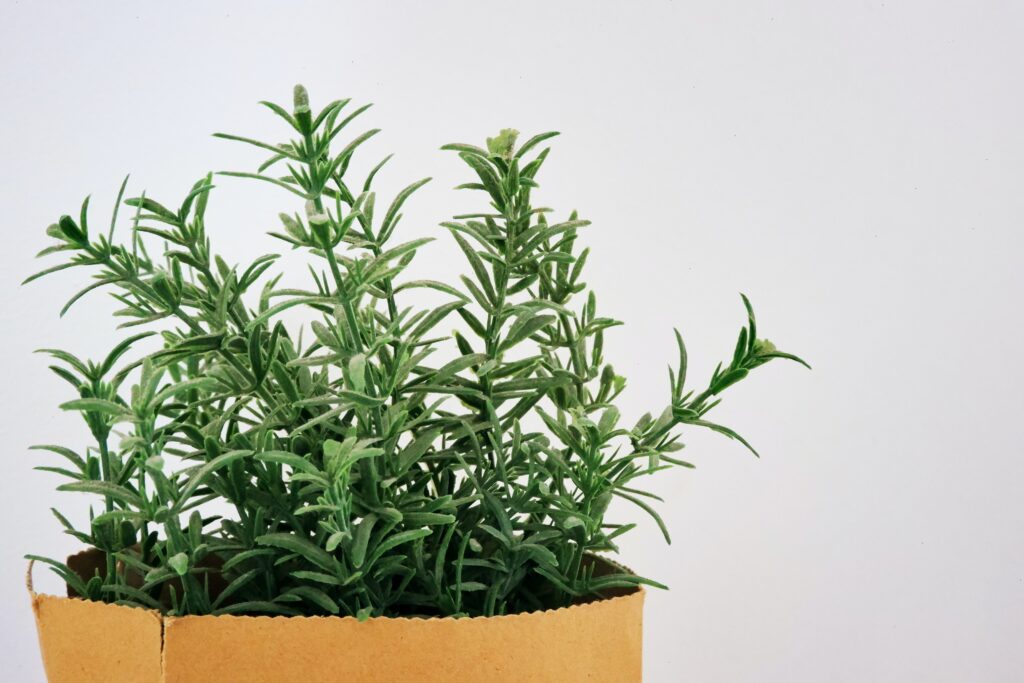
Rosemary has a long history of being used for various purposes. The ancient Greeks and Romans considered it a symbol of remembrance, loyalty, and wisdom. They also used it for culinary, medicinal, and religious purposes. In the Middle Ages, rosemary was believed to ward off evil spirits and protect against the plague. Today, rosemary is widely used as a seasoning for meat, poultry, fish, vegetables, bread, and cheese. It is also used as an ingredient in herbal teas, oils, vinegars, and cosmetics. Rosemary has many health benefits as well. It contains antioxidants and anti-inflammatory compounds that can help prevent or treat various diseases.
Some of the main uses of rosemary are:
- Adding flavor and aroma to food
- Enhancing memory and concentration
- Improving mood and reducing stress
- Boosting immunity and fighting infections
- Relieving pain and inflammation
- Promotes hair growth and preventing hair loss
- Repelling insects and pests
Growing Rosemary in India
Rosemary is not a native plant of India, but it can be grown successfully in most parts of the country with proper care and attention. Here are some tips on how to grow rosemary in India:
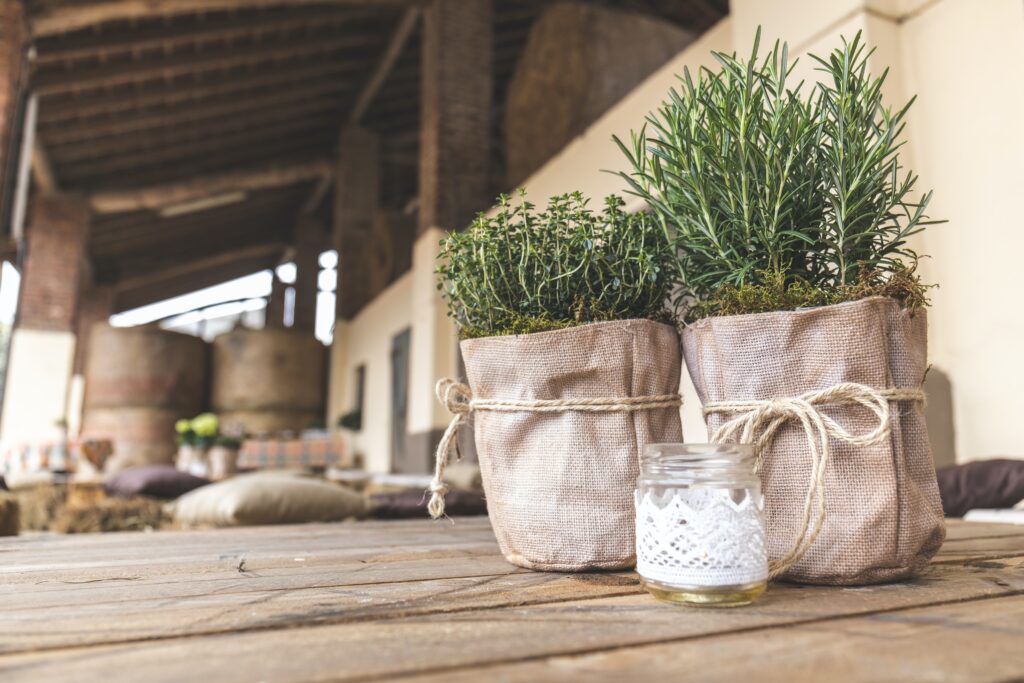
Sunlight Requirements
Rosemary loves sunlight and needs at least 6 to 8 hours of direct sun exposure every day. If you live in a hot and humid climate, you may want to provide some shade for your rosemary plant during the peak hours of the day to prevent it from wilting or burning. If you live in a cold and cloudy climate, you may want to place your rosemary plant near a sunny window or under artificial lights to ensure it gets enough light.
Watering Requirements
Rosemary is a drought-tolerant plant that does not need much water. In fact, overwatering can cause root rot and fungal diseases that can kill your rosemary plant. You should only water your rosemary plant when the top inch of the soil feels dry to the touch. You should also avoid wetting the leaves or the stems of your rosemary plant as this can cause mold or mildew to grow. You should water your rosemary plant deeply but infrequently, allowing the excess water to drain out of the pot.

Soil Requirements
Rosemary prefers well-drained, sandy, and slightly acidic soil with a pH level between 6.0 and 7.0. You can use a commercial potting mix or make your own by mixing equal parts of garden soil, sand, and compost. You should avoid using heavy or clayey soil that can retain too much moisture or block the air circulation around the roots of your rosemary plant. You should also avoid using too much fertilizer or manure as this can make the soil too rich or alkaline for your rosemary plant.
Potting Mix
Rosemary is best grown in containers as this allows you to control the soil quality, moisture level, and temperature of your rosemary plant. You should choose a pot that is at least 12 inches in diameter and has drainage holes at the bottom. You should fill the pot with your chosen potting mix and leave some space at the top for watering. You should transplant your rosemary plant into a larger pot when it outgrows its current one or when the roots start to circle around the edge of the pot.
Trimming and Pruning
Rosemary is a fast-growing plant that can become leggy or woody if left untrimmed or unpruned. You should trim or prune your rosemary plant regularly to maintain its shape, size, and health. You should remove any dead, diseased, or damaged branches or leaves from your rosemary plant as soon as you notice them. You should also remove any flowers or buds from your rosemary plant as they can reduce the flavor and aroma of the leaves. You should trim or prune your rosemary plant lightly throughout the year to encourage new growth and prevent it from becoming too dense or bushy. You should trim or prune your rosemary plant more heavily in late winter or early spring before new growth begins to stimulate flowering and branching.

Rosemary as an Ornamental Plant
Rosemary is not only a useful herb plant, but also a beautiful ornamental plant that can add color and fragrance to your garden or balcony. You can grow rosemary as a border, hedge, or ground cover plant in your garden or as a potted plant on your balcony or terrace. You can also shape your rosemary plant into different forms such as a ball, cone, spiral, or topiary. You can also combine your rosemary plant with other plants that have similar growing conditions such as lavender, sage, thyme, oregano, or mint.
Growing Rosemary from Seed and Propagation
Rosemary can be grown from seed, but it is a slow and difficult process that requires patience and skill. Rosemary seeds have a low germination rate and can take up to 3 months to sprout. You should sow the seeds in a shallow tray filled with moist potting mix and cover them lightly with soil. You should place the tray in a warm and bright location and keep the soil moist but not soggy. You should transplant the seedlings into individual pots when they have at least 2 pairs of true leaves.
A faster and easier way to grow rosemary is by propagation. Propagation is the process of creating new plants from existing ones by using cuttings, divisions, or layers. You can propagate rosemary by taking cuttings from healthy and mature stems of your rosemary plant. You should cut a 4 to 6 inch long stem from the tip of your rosemary plant and remove the lower leaves. You should dip the cut end of the stem in rooting hormone and insert it into a small pot filled with moist potting mix. You should place the pot in a warm and bright location and keep the soil moist but not wet. You should transplant the cutting into a larger pot or into the ground when it has developed roots.
Troubleshooting and Rosemary Plant Problems
Rosemary is generally a hardy and resilient plant that can withstand most pests and diseases. However, some common problems that can affect your rosemary plant are:
- Spider mites: These are tiny insects that suck the sap from the leaves of your rosemary plant, causing them to turn yellow, brown, or gray. You can identify spider mites by their web-like trails on the underside of the leaves. You can control spider mites by spraying your rosemary plant with water or insecticidal soap.
- Aphids: These are small insects that suck the sap from the stems and buds of your rosemary plant, causing them to curl, wilt, or drop. You can identify aphids by their green, black, or white bodies that cluster on your rosemary plant. You can control aphids by spraying your rosemary plant with water or insecticidal soap or by introducing natural predators such as ladybugs or lacewings.
- Powdery mildew: This is a fungal disease that causes white or gray patches on the leaves of your rosemary plant. It is more common in humid or shady conditions. You can prevent powdery mildew by providing good air circulation and sunlight for your rosemary plant. You can treat powdery mildew by pruning the infected parts of your rosemary plant and spraying it with fungicide.
- Root rot: This is a fungal disease that causes the roots of your rosemary plant to decay and rot quickly. It is more common in wet or poorly drained soil. You can prevent root rot by using well-drained soil and watering your rosemary plant only when needed. You can treat root rot by removing the infected parts of your rosemary plant and repotting it in fresh soil.
How to Harvest and Store Rosemary Plants
Rosemary is a perennial plant that can be harvested throughout the year. However, the best time to harvest rosemary is in spring or summer when the plant is in full bloom. You should harvest rosemary in the morning after the dew has dried but before the sun gets too hot. You should cut the stems of your rosemary plant with a sharp knife or scissors and leave at least 2 inches of stem on the plant for regrowth.
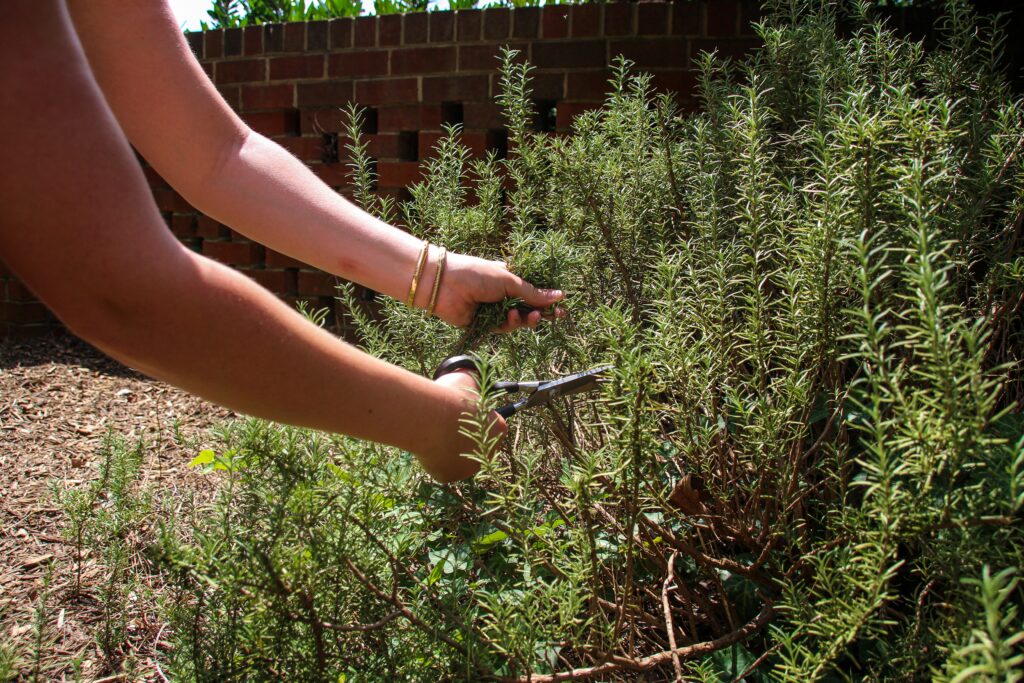
You can use fresh rosemary immediately or store it for later use. There are several ways to store fresh rosemary:
- Refrigerate: You can wrap fresh rosemary stems in damp paper towels and store them in a plastic bag or container in the refrigerator for up to 2 weeks.
- Freeze: You can chop fresh rosemary leaves and store them in an ice cube tray filled with water or oil. You can then freeze the tray and pop out the cubes whenever you need them.
- Dry: You can tie fresh rosemary stems into small bundles and hang them upside down in a dry, dark, and airy place for 2 to 4 weeks. You can then strip off the dried leaves and store them in an airtight jar or container.
- Preserve: You can preserve fresh rosemary by immersing the stems in a jar or bottle filled with vinegar, oil, honey, or salt. You can then store the jar or bottle in a cool and dark place for up to 6 months. You can use the preserved rosemary as a condiment or a marinade for your dishes.
Benefits of Rosemary
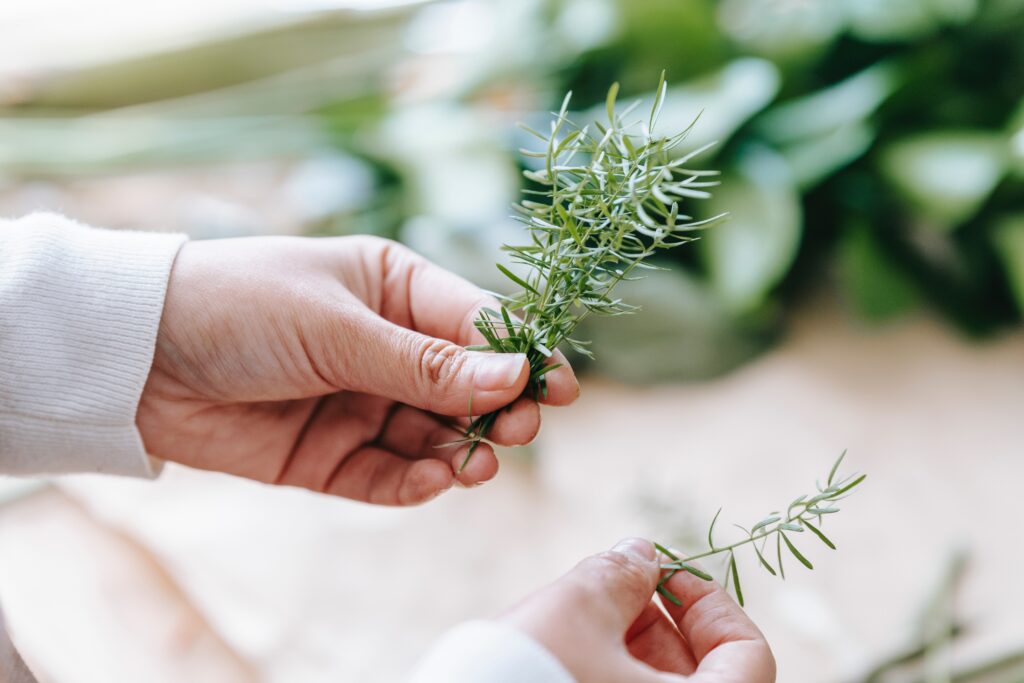
Rosemary is not only a tasty herb, but also a healthy one. Rosemary has many benefits for your body and mind. Some of the benefits of rosemary are:
- Antioxidant and anti-inflammatory properties: Rosemary contains rosmarinic acid, carnosic acid, and carnosol, which are powerful antioxidants that can protect your cells from free radical damage and inflammation. These compounds can also help prevent or treat diseases such as cancer, diabetes, arthritis, and Alzheimer’s.
- Source of iron, calcium, and vitamins A, C, and B-6: Rosemary is rich in minerals and vitamins that are essential for your blood, bones, eyes, skin, and immune system. Iron helps transport oxygen in your blood and prevent anemia. Calcium helps build and maintain strong bones and teeth. Vitamin A helps maintain healthy vision and prevent infections. Vitamin C helps boost your immunity and heal wounds. Vitamin B-6 helps regulate your mood and metabolism.
- Cognitive stimulant: Rosemary can enhance your memory and concentration by stimulating the activity of acetylcholine, a neurotransmitter that is involved in learning and memory. Rosemary can also improve your mood and reduce stress by modulating the levels of serotonin, dopamine, and cortisol, which are hormones that affect your emotions and behavior.
- Aromatic quality: Rosemary has a pleasant and refreshing scent that can invigorate your senses and relax your mind. You can use rosemary as an aromatherapy agent by inhaling its fragrance or applying its oil on your skin. You can also use rosemary as a natural deodorizer by placing its sprigs or sachets in your closet, drawer, or car.
FAQs
Here are some frequently asked questions about rosemary:
How do I use rosemary in cooking?
You can use fresh or dried rosemary leaves to season your dishes. You can add rosemary to meat, poultry, fish, vegetables, bread, cheese, soups, sauces, salads, or desserts. You can also make rosemary tea by steeping fresh or dried rosemary leaves in hot water for 10 minutes.
How do I grow rosemary indoors?
You can grow rosemary indoors by following the same tips as growing it outdoors. You should choose a pot that has drainage holes and fill it with well-drained potting soil. Place your rosemary plant near a sunny window or under artificial lights. Water your rosemary plant only when the soil feels dry to the touch. You should trim or prune your rosemary plant regularly to keep it healthy and compact.
How do I propagate rosemary?
You can propagate rosemary by taking cuttings from healthy and mature stems of your rosemary plant. You should cut a 4 to 6 inch long stem from the tip of your rosemary plant and remove the lower leaves. You should dip the cut end of the stem in rooting hormone and insert it into a small pot filled with moist potting mix. Then place the pot in a warm and bright location and keep the soil moist but not wet. You should transplant the cutting into a larger pot or into the ground when it has developed roots.
How do I store rosemary?
You can store fresh rosemary by wrapping it in damp paper towels and refrigerating it for up to 2 weeks. You can also store frozen rosemary by chopping it and freezing it in ice cube trays filled with water or oil. You can store dried rosemary by stripping off the leaves and storing them in an airtight jar or container. Another way to store preserved rosemary by immersing it in vinegar, oil, honey, or salt and storing it in a cool and dark place for up to 6 months.
Where is rosemary grown in India?
Rosemary can be grown all over the world, including anywhere in India. Rosemary can be grown in pots, containers, and in kitchen gardens in India
Does rosemary grow in India?
Yes, Rosemary can be grown anywhere in India. However, it can be grown best outdoors in full sunlight as it is an outdoor plant. It does really well in garden soil. Keep it away from rain and avoid overwatering since its quickly rots once overwatered.
Can Rosemary be grown using cuttings?
Yes, Rosemary can be grown from cuttings.You should cut a 4 to 6 inch long stem from the tip of your rosemary plant and remove the lower leaves. Using a knife or scissors lightly scrape the end of the stem. This helps in producing new roots. Now dip this cutting in a bottle of plain water and keep it outside in sunlight.
Conclusion
Rosemary is a versatile herb that can be grown in India with proper care and attention. Rosemary has many uses in cooking, medicine, and aromatherapy. Rosemary has many benefits for your body and mind as well. Rosemary is easy to propagate, harvest, and store for later use.
Rosemary Plant
break: A small shrub plant, Buy Rosemary Plant Bangalore is also known as Mist of the Sea. With their blue
3 in stock


